James Clerk Maxwell (1831 – 1879) was a Scottish scientist who is most famous for his classical theory of electromagnetic radiation, which for the first time brought together electricity, magnetism and light as different manifestations of the same phenomenon. This unification by Maxwell is considered a scientific landmark comparable to the work done by Isaac Newton and Albert Einstein. In fact, when Einstein was asked if he had stood on the shoulders of Newton, he replied: “No, I stand on Maxwell’s shoulders.” Maxwell, through his equations of electromagnetism, paved the way for major technological innovations including the television and the microwave. Apart from his work in electromagnetism, Maxwell accurately described the reason for the stability of Rings of Saturn; made important contributions to Colour Theory in Optics; and wrote the founding paper on the field of cybernetics. Know more about the achievements of one of the giants of physics through his 10 major contributions to science.
#1 He GAVE MATHEMATICAL FORM TO FARADAY’S WORK IN ELECTROMAGNETISM
In 1820, Danish physicist Hans Christian Orsted discovered that flow of electric current through a wire produced a magnetic field. English scientist Michael Faraday built on this discovery to devise a number of unique, inventive ways to test and explore electromagnetic phenomena; and made several important discoveries regarding the nature of electromagnetism. Maxwell, one of the finest mathematicians of his time, unified the then disparate science of electromagnetism into a coherent theory, complete with mathematical formalism. As early as 1855 when he was only 24, he produced a paper titled “On Faraday’s lines of force”, in which he presented a simplified model of Faraday’s work; and explained how electricity and magnetism are related. Maxwell reduced all of the current knowledge in the field into a linked set of differential equations with 20 equations in 20 variables. In 1881, British physicist Oliver Heaviside reduced 12 of these 20 equations into four differential equations, known now collectively as Maxwell’s equations.

#2 HiS EQUATIONS FORM THE BASIS OF CLASSICAL ELECTROMAGNETISM
Maxwell’s equations accurately and completely describe electromagnetism. They form the foundation of classical electromagnetism, classical optics and electric circuits. Maxwell’s equations describe how electric charges and electric currents create electric and magnetic fields. Further, they describe how an electric field can generate a magnetic field, and vice versa. Individually, the four equations are: Gauss’s law, which allows you to calculate the electric field created by a charge; Gauss’s law for magnetism, which can be used to calculate the magnetic field; Faraday’s law, which describes how a time varying magnetic field creates an electric field; and Ampere’s law with Maxwell’s addition, which states that magnetic fields can be generated in two ways: by electric current (Ampere’s law) and by changing electric fields (Maxwell’s addition). There are innumerable applications of Maxwell’s equations. Any device that uses electricity or magnets is on a fundamental level built upon the them.

#3 HIS UNIFICATION OF ELECTROMAGNETISM AND OPTICS IS CONSIDERED A SCIENTIFIC LANDMARK
Maxwell used his equations to predict the existence of waves of oscillating electric and magnetic fields that travel through empty space. Furthermore, he found that the speed of propagation of an electromagnetic wave is approximately that of the speed of light. Maxwell knew this was more than just a coincidence. He understood the connection between electromagnetic waves and light. In 1864, Maxwell presented his electromagnetic theory of light propagation with the publication of his paper “A Dynamical Theory of the Electromagnetic Field”. In it, he deduced that light is an electromagnetic wave thereby proposing that electric field, magnetic field and light could all be explained with a single theory. Maxwell’s electromagnetic theory of light propagation is considered the “second great unification in physics” after the first one realized by Isaac Newton.
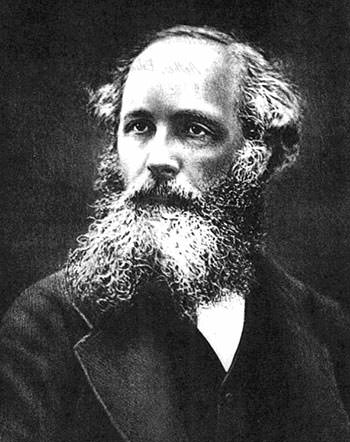
#4 He PAVED THE WAY FOR MAJOR TECHNOLOGICAL INNOVATIONS
In 1861–62, Maxwell’s famous four-part paper “On Physical Lines of Force” was published. In it, among other things, he derived his equations of electromagnetism. The paper ushered in a new era of classical electrodynamics and catalysed further progress in the mathematical field of vector calculus. Due to this, it is considered one of the most significant publications in the field of science, comparable with Einstein’s Annus Mirabilis papers and Newton’s Principia Mathematica. Maxwell’s electromagnetic theory of light, which he proposed in 1864, paved the way for a number of major technological innovations. The first and perhaps most significant of these occurred in 1888, when Heinrich Hertz used Maxwell’s theory to create instruments capable of sending and receiving radio waves. By 1901, Guglielmo Marconi was transmitting radio waves. This in turn contributed to the creation of numerous devices including the television and the microwave.
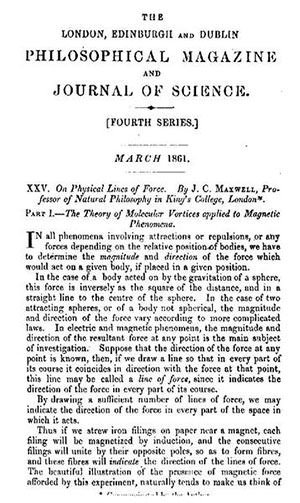
#5 HE ACCURATELY DESCRIBED THE REASON FOR THE STABILITY OF RINGS OF SATURN
Rings of Saturn are the most extensive ring system of any planet in the Solar System. In 1610, Galileo Galilei became the first person to observe Saturn’s rings. During the time of Maxwell, it was not known how they could remain stable without breaking up, drifting away or crashing into Saturn. While still in his twenties, Maxwell devoted two years to study this problem, which had eluded scientists for 200 years. He proposed that a regular solid ring could not be stable, while a fluid ring would be forced by wave action to break up into blobs. Maxwell thus concluded that the rings must be composed of numerous small particles he called “brick-bats”, each independently orbiting Saturn. In 1859, he won the prestigious Adams Prize, awarded by the University of Cambridge, for his essay “On the stability of the motion of Saturn’s rings”. In 1980, more than a century later, Maxwell’s prediction was confirmed by images sent back by spacecraft Voyager 2. We now know that Saturn’s rings consist of countless small particles, ranging from a micrometer to a meter in size.

#6 He MADE IMPORTANT CONTRIBUTIONS TO COLOUR THEORY
Isaac Newton laid the foundation of Colour Theory showing that mixing the seven colours of the spectrum in different proportions could produce any compound colour. English polymath Thomas Young expanded on Newton’s work to develop the trichromatic colour theory, according to which the human eye recognizes three primary colours: red, green and blue. In 1849, Maxwell began his work on the subject; and between 1855 to 1872, he published at intervals a series of investigations concerning the perception of colour, colour-blindness and colour theory. Maxwell used linear algebra to prove Young’s theory. His most important paper on Optics, “On the Theory of Colour Vision”, was presented to the Royal Society in 1855 and won the Rumford Medal. It showed that colour blindness was due to individuals being unable to recognise red light and conclusively proved the theory of three primary colours: that any natural colour could be produced from red, green and blue. Maxwell’s work in optics led to colour matching experiments and Colorimetry, the science and technology used to quantify and describe physically the human colour perception.
#7 HE PRODUCED THE WORLD’S FIRST COLOUR PHOTO IN 1861
Maxwell also applied the theory of colour perception in photography. He reasoned that if any three lights could reproduce any perceivable colour, then colour photographs could be produced with a set of three coloured filters. During an 1861 Royal Institution lecture on colour theory, Maxwell presented the world’s first demonstration of colour photography using the principle of three-colour analysis and synthesis. He took photographs of a tartan ribbon three times: first through a red light filter, then a green filter and then a blue filter. The result of projecting the three images simultaneously on to a screen was a colour image of the tartan cloth. This was the first ever colour photograph. However, the result was not perfect due to ultraviolet light, which is strongly reflected by some red dyes and was not entirely blocked by the red filter.
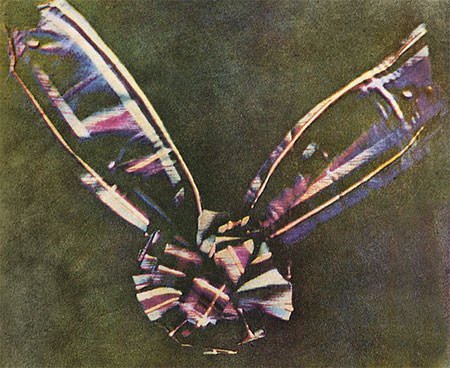
#8 HE WAS FIRST TO APPLY PROBABILITY AND STATISTICS TO KINETIC THEORY OF GASES
Maxwell investigated the kinetic theory of gases, which had been advanced by the efforts of several scientists. He was the first to apply the methods of probability and statistics in describing the properties of an assembly of molecules. Maxwell realized that all gas particles would not move at the same speed, as assumed at that time. This was because collisions between them would speed some of them up and slow some of them down. Maxwell showed that particles in a gas would have a particular statistical distribution, known subsequently as the Maxwell–Boltzmann distribution after him and Austrian physicist Ludwig Boltzmann. The Maxwell–Boltzmann distribution applies to the classical ideal gas. There are various effects in real gases which makes their speed distribution different. However, rarefied gases at ordinary temperatures behave very nearly like an ideal gas and Maxwell–Boltzmann distribution is an excellent approximation for such gases. Thus, it forms the basis of the kinetic theory of gases.
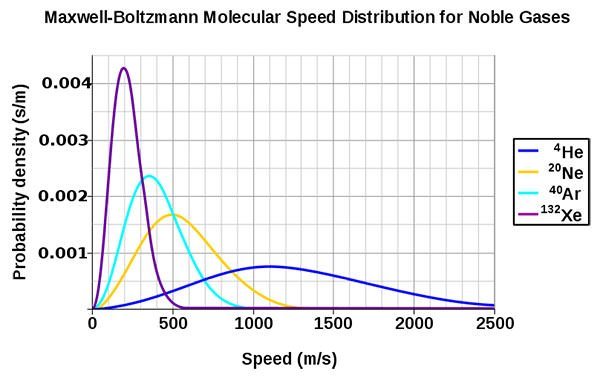
#9 HiS DEMON WAS A FACTOR IN THE DEVELOPMENT OF INFORMATION THEORY
Maxwell’s work on thermodynamics led him to devise the thought experiment that came to be known as Maxwell’s demon. In the experiment, the beast controls a small door between two chambers of gas. As individual gas molecules approach the door, the demon quickly opens and shuts the door so that fast molecules pass into the other chamber, while slow molecules remain in the first chamber. Because faster molecules are hotter, the demon’s behaviour causes one chamber to warm up as the other cools, thus decreasing entropy and violating the second law of thermodynamics. Maxwell’s demon was an instant source of fascination; still causes debate among physicists; and has led to many important results, including the development of information theory. Information entropy is defined as the average amount of information produced by a randomly determined source of data. The paradox posed by Maxwell’s thought experiment ultimately led a challenge to give a physical interpretation to information.
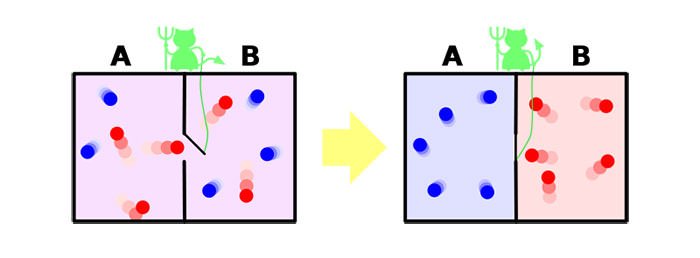
#10 He WROTE THE FOUNDING PAPER ON CYBERNETICS
Governors, at the time of Maxwell, were systems used to regulate steam engines by controlling the steam inflow to a valve by means of a flying valve. In his 1868 paper “On governors”, Maxwell highlighted the fundamental distinction between moderators and governors. In moderators, the correcting torque is proportional to speed error while governors also contain a term proportional to the integral of the error. Maxwell observed that to achieve exact speed regulation, feedback control must minimize the integral of the speed error. “On governors” is regarded as a central paper of the early days of control theory and as the founding paper on cybernetics, a discipline which explores regulatory systems. Norbert Wiener, considered as the originator of cybernetics, designated Maxwell as the father of modern automatic control realizing that it took one of the greatest minds to foresee the importance of the mathematical science of feedback. Automatic control remains one of the most significant concepts in modern science and engineering.

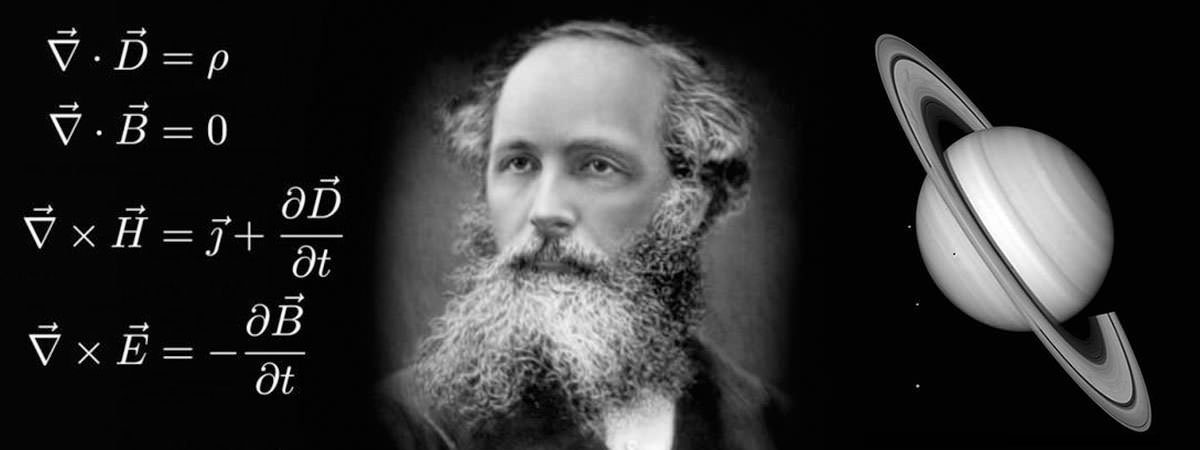
got it: Max was the greatest mathematician who has every Lived. His greatest contribution was to empower others to emulate him and possibly even surpass his towering and completely unique intellect! So inspiring…
If he took and SAT test Every single one of his answers would not be merely correct but the test givers would be completely overwhelmed by his insights into all areas of thought, reasoning and spirituality.
Talent hits a target no one else can hit. Genius hits a target no one else can see or even be aware exists. Maxwell was a 19th century arch wizard of genius nothing less and there is nothing more.
So how can mere mortals measure up? By realizing that Maxwell only human, of course! Monkey see monkey do on a profoundly important level.
My favorite Maxwell Quote is “Thank God I am working for him because if not I could be the most titanically destructive evil genius who has ever Lived! I believe every single word from him why? Because it is the word of God itself and God NEVER LIES.
really helpful
Happy to help.